Our Partners
Our current and past partners and collaborators include federal and state governments and universities in Australia and overseas
Billcap Pty Ltd

Informedness and Price Elasticity in Retail Electricity Markets
In 2015, David Byrne received an ARC Linkage Grant with industry partner, Bill cap Pty Ltd, to conduct a field experiment to study how households respond to changes to variable and fixed electricity prices, and information that helps clarify how these parts of price affect their bill. The experimental variation generated by the project was used to identify a new model of household electricity consumption demand. The model was used to evaluate dynamic tariff reform in the retail sector.
For more information on Billcap, see https://billcap.com/
Biodiversity Conservation Trust of NSW

Biodiversity Conservation Trust auction design
In 2018 a report was commissioned by Biodiversity Conservation Trust of NSW for the development of its Conservation Management Programs. Following changes in Biodiversity Conservation Act 2016, the NSW Government planned to implement a strategic approach to public investment in biodiversity conservation delivered through the NSW Biodiversity Conservation Trust (BCT).
The CMD provided the Biodiversity Conservation Trust (BCT) with advice on the design of the conservation auction mechanism given the objectives established by the NSW Government for the BCT Conservation Management Program. The report drew on:
- auction and incentive theory;
- laboratory evidence; and
- practical experience with auctions in general and conservation auctions themselves.
The CMD provided the BCT with a summary of relevant economic design principles that underpin auction/contract design as context for the advice provided on specific issues raised by BCT.
For more information on the Biodiversity Conservation Trust, visit https://www.bct.nsw.gov.au/
Centre for Excellence for Biosecurity Risk Analysis (CEBRA)

Biosecurity border protection (Incentives for Importer Choice)
The CMD worked with the Centre for Excellence for Biosecurity Risk Analysis (CEBRA) and the Monash Experimental Research Insights Team (MERIT) in 2014 to pilot the use of designed incentives in Australia’s biosecurity system to provide advice to the Department of Agriculture, Fisheries and Forestry (DAFF).
The project aimed to create incentives within the biosecurity system to improve the cost-effectiveness of inspection regimes, while minimising the likelihood of contaminated items entering Australia. There is scope to improve the cost-effectiveness of regulation by introducing designed incentive structures into regulatory rules.
The project complemented CEBRA’s risk-based regime by applying the theory of incentives and regulation (developed by economist Jean Tirole, awarded the Nobel Prize in 2014) and inspection game theory. These ideas can be applied to many other areas of regulation across the economy.
For more information on CEBRA, visit https://cebra.unimelb.edu.au/
Incentive-compatible biosecurity policies - a framework for regulatory design
CMD Policy Director, Gary Stoneham, is working with CEBRA project leader Susie Hester on this project.
Humans are largely responsible for the spread of pests and diseases across the globe, via air and sea cargo, mail, and travel. Governments impose regulations intended to reduce biosecurity risks from these activities. Each biosecurity regulation creates an inducement (an incentive) for individuals to take actions that they would otherwise not consider. This occurs whether or not actors explicitly consider incentives in regulation design. If incentives are not explicitly considered, objectives are unlikely to be met. Worse still, the regulation may trigger the opposite of the intended behaviour and incur significant costs of managing incursions, checking compliance, or in managing trade relationships. Explicitly considering incentives in the design of biosecurity regulations will significantly improve their effectiveness and efficiency.
The overarching objective of this project is to apply well-established economic ideas and techniques to create a systematic framework for incorporating incentives into regulation design. This project will use a mix of economic theory, field trials and case studies in combination with scientific knowledge on the behaviour of pests and diseases (epidemiology) to deliver a framework for the development and roll-out of incentive-compatible biosecurity regulation.
Court Services Victoria

Youth Diversion Pilot Program
The CMD is in the final stages of reporting on a joint field experiment to evaluate the effectiveness of a range of non-custodial interventions being piloted for young offenders in Victoria. The incidence and management of criminal offences by young people is a pressing problem for most governments.
The CMD in partnership with Court Services Victoria, the Children's Court of Victoria, RMIT University and the Department of Justice and Community Safety have systematically recorded recidivism rates for different interventions over the past two years (2017 and 2018) and have completed over 450 interviews with young offenders appearing in court. Analysis of these data will help determine the types of interventions that influence rates of recidivism and the longer-term costs and benefits of diversion programs.
For more information on Court Services Victoria, see https://www.courts.vic.gov.au/
Department of Agriculture and Water Resources
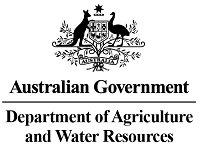
Biosecurity Risk Analysis
In 2019, the CMD commenced an analysis of Australia’s biosecurity system with the Centre of Excellence for Biosecurity Risk Analysis and the Centre for Actuarial Studies at the University of Melbourne.
Stage 1 of this policy project is investigating the economic case for a more decentralised biosecurity risk management mechanism via actuarially priced biosecurity insurance premiums. This project has potential to advance to a field pilot in which behavioural changes would be measured in response to changes in information and incentive settings.
Stage 2 of this project will involve applying an alternative policy mechanism in a desk-top analysis for managing biosecurity risk in Australia.
For more information on the Department of Agriculture, see http://www.agriculture.gov.au/
Department of Education and Training

Early Childhood Education Matching Markets
In 2012/2013 the CMD worked on a project with the aim to assist the Department of Education and Early Childhood Development DEED (now known as the Department of Education and Training) with the allocation of childhood education placements using matching markets.
Kindergarten, or preschool, is a non-mandatory one-year programme for children the year before they start school. Kindergarten admission is managed at a local level, often by local councils or cluster managers. Each kindergarten has a limited number of places available each year and the relevant council or cluster manager determines which children have a higher priority if demand exceeds supply. In most cases the application process has been centralised, allowing parents to fill only one application form for all centres within the same council or relevant area. Each council then allocates places based on family preferences, priorities and the capacity of each centre.
These processes do not take advantage of the latest developments in matching theory. This creates inefficiencies, the application process takes several weeks, the allocation process does not fully respect priorities, and in some situations, parents need to misreport their preferences in order to avoid losing priority.
The CMD proposed using matching theory techniques could considerably reduce the amount of time required to offer places to children, reduce waiting time for parents and yield savings for councils. The matching system would fully respect priorities, ensuring no child loses a place to another child with lower priority. Finally, possible gains from misreporting preferences would be eliminated, making the application process easier for parents and allowing councils to better understand the demand for their centres.
For more information on the Department of Education and Training, visit https://www.education.vic.gov.au/Pages/default.aspx
Department of Resources, Energy and Tourism
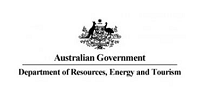
Design of a cash bidding system for offshore petroleum exploration acreage
Under a competitive cash bidding system, applicants offer cash bids for the right to explore with exploration permits being awarded to the highest cash bidder. Permit holders have the exclusive right to apply for production licenses if a resource is discovered. In November 2012, the Australian Government announced its decision to move to a cash bidding system (to apply from 2014) for mature areas or those known to contain petroleum accumulations, with the work program bidding system to be maintained for all other areas.
The move to cash bidding in mature areas or those known to contain petroleum accumulations is intended to prevent over-exploration in areas where none or little may be required and ensure that the release of these areas continues to be equitable, economic and efficient.
The CMD was engaged to provide advice on the design of a cash bidding system for the award of offshore petroleum acreage for mature areas or those known to contain petroleum accumulations, for commencement in the 2014 Acreage Release. The CMD collaborated with the Victorian Government and the University of Queensland to provide services to the Commonwealth.
The Department of Resources, Energy and Tourism was dissolved in 2013 and replaced by the Department of Industry
Department of Social Services
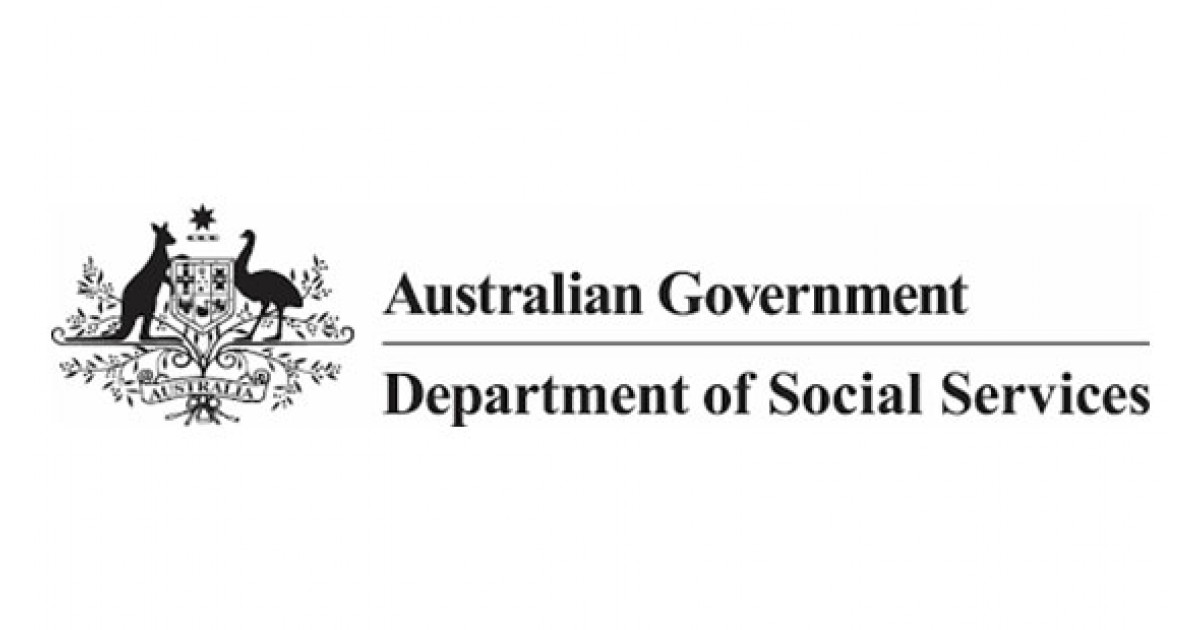
Integrated Care and Commissioning Design and Implementation
The Centre for Market Design (CMD) will engage with the Department of Social Services to co-draft a research paper that identifies how the expertise and experience could contribute to the effectiveness and efficiency of interventions in the care and support sector.
Department of Treasury and Finance

Environmental Accounts
A project including representatives for the United Nations (SEEA); ABS (Environmental Accounts Group); the Department of Sustainability and Environment; and Budget and Financial Planning was created in 2012 to examine the role of environmental accounting in the budget allocation and monitoring process.
The project objectives were:
- To systematically address the information impediments to market creation in the environmental domain
- To examine the role of environmental accounting in the budget allocation and monitoring process
- To measure of impact and progress of Government programs
The CMD provided technical support for the working group (BFM, United Nations, EFP, ABS) to facilitate the application of environmental accounts to Government budget allocation and reporting processes. The CMD also provided technical input to the System of Environmental and Economic Accounts on valuation of ecosystem services for the UN Technical Group.
Environment Protection Authority – NSW Government

Hunter River Salinity Trading Scheme Vickrey Auction Design and Implementation Project
The New South Wales Environment Protection Authority (EPA) controls salt concentration in the Hunter River through a market mechanism. In 2014 the CMD designed and implemented new a mechanism to allocate pollution credits. The primary objective of the EPA in this case was to allocate the available credits to those that value them the most. Raising revenue was a secondary consideration in the auction.
A fit-for-purpose, multi-unit auction was designed specifically to elicit the information needed to achieve the allocative efficiency objective. The auction was hosted electronically to allow internet bidding. This auction demonstrated the importance of appropriate design, the advantages and flexibility available in using electronic auctions and the importance bidder training and auction participation when new designs for allocation mechanisms are being implemented.
For more information on the NSW Environment Protection Authority, visit https://www.epa.nsw.gov.au/
Infrastructure Victoria
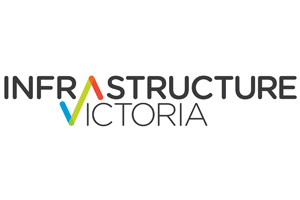
Waste Sector Reform
The health and environmental impacts of waste is an ongoing challenge for all levels of government. The CMD, in 2019, is working with Infrastructure Victoria to assess the waste system in Victoria. Economic design methodologies will be applied to assist Infrastructure Victoria to identify options to meet its waste and recycling policy goals.
The CMD will analyse and identify the complexities that prevent alignment between objectives and actual outcomes, to help define policy intervention options.
For more information on Infrastructure Victoria, see http://www.infrastructurevictoria.com.au/
Jemena

Power Changers
Associate Professor David Byrne has been instrumental in the design and evaluation of a Power Changers large scale randomised controlled trial at Victorian energy distributor Jemena. The project won Digital Utility Innovation of the year and was runner-up in Energy Network Australia’s 2018 Innovation Award.
The team looked at ways to use smart meter data to incentivise households to cut power use during peak periods to help create energy grid stability. It was designed to create behavioural change to reduce the cost of running the energy grid as governments transition to a low-carbon grid in the long run. More than 600 households in suburban Melbourne registered in the four-month trial from December 2017 – March 2018, which showed average peak electricity consumption on hot days down between 23 and 35 per cent.
Jemena will use the findings of the report for further research into customer behaviours and potential future benefits of smart meters. The findings have also been shared with the Victorian Government to inform future energy policy.
For more information on Jemena, see https://jemena.com.au/
Medical Panels Victoria

Medical Panels Auction
Medical panels are established under the Accident Compensation Act 1985 toprovide medical opinions on disputes over workplace injuries or medical conditions. Eligible medical practitioners apply to form a pool of available practitioners. They are appointed by the Governor in Council on the advice of the Convenor of Medical Panels (Victoria) (MPV). When CMD was engaged to design, build and implement a new generation of procurement auctions, there were 181 medical practitioners in Victoria. MPV are responsible under the Convenor, for convening medical panels and allocating cases.
In 2015-2016, CMD designed a fit-for-purpose procurement auction, hosted on web-based electronic platforms, with bidders participating on-line. This pilot was used to evaluate the scope for cost savings as well as process savings to the Victorian Government.
For more information on Medical Panels Victoria, visit http://www.medicalpanels.vic.gov.au/
Melbourne Energy Institute

Energy Markets (network infrastructure and demand management)
In 2012/2013 the CMD worked with the Melbourne Energy Institute to identify market structure problems in the electricity sector and to undertake research to address problems. The interaction between smart meters and real-time pricing in competitive retail electricity markets was examined as well as the impact of retailers’ strategies to base customer charges on individual energy consumption patterns. It focused on search costs, customer poaching, averse selection and market unravelling to explore the potential market impacts of revealing customer costs through smart meters.
This project contributed to the design of an effective regulatory environment in a changing electricity market.
For more information on the Melbourne Energy Institute, visit https://energy.unimelb.edu.au/
National Disability Insurance Scheme

Development and pilot of market matching mechanism for transport services
Students with a disability at the Northern School for Autism in Victoria are spending less time travelling to and from school, thanks to a pilot project by the Centre for Market Design and partners, to improve transport.
The CMD partnered with the California Institute of Technology(Caltech) to design and implement a trial that applied economic design techniques to improve student travel services. The trial incorporated student travel service and quality requirements into an auction to allocate and price transport services for students with a disability. New computational techniques were developed to formulate bus routes and an auction was designed to efficiently allocate and price the routes. This process resulted in a significant improvement in the quality of student travel services with no increase in price. It dramatically cut average travel times for students, reduced the maximum travel time for any student from 2 hours (each way) to 50 minutes and increased the education time for participating students by around 200 hours per year, thanks to timely arrival of buses.
The trial was funded in 2018 by the Victorian Department of Education and Training who manage student travel services on behalf of the National Disability Insurance Scheme (NDIS). The objectives of the project were to demonstrate how economic design techniques can be used to improve the quality of disability services and harnesses competition to reveal fair and efficient prices.
The Centre’s Director of Policy, Gary Stoneham, worked with partners including Professor Charles Plott at Caltech on this project, which is an example of how fit-for-purpose mechanisms can make a positive difference to the quality and cost-effectiveness of services provided by government.
For more information on NDIS, see https://www.ndis.gov.au/
New South Wales Treasury
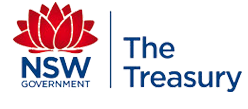
Allocation of coal exploration licences in New South Wales
Coal resources in New South Wales (NSW) are owned by the state. The important role for government is to create the economic environment needed to encourage private firms to invest millions of dollars in exploration, mining, processing and transport networks, while achieving broader environmental and social objectives.
In 2014, the NSW Treasury engaged the CMD to undertake the following tasks:
- Conduct a brief review and assessment of allocation models for exploration licenses (Els) used in other jurisdictions, covering theoretical and practical application issues.
- Develop an EL allocation framework that encompasses direct allocation, competitive allocation and intermediate options covering any other possible allocation scenario.
- Assess options for the design of the EL auction component and related technical advice.
- Conduct testing or workshops and assess modifications or alternatives.
- Prepare a report documenting the recommended approach or approaches.
- Prepare an implementation plan.
For information on the NSW Treasury, visit https://www.treasury.nsw.gov.au/
Office of Environment and Heritage - NSW Government
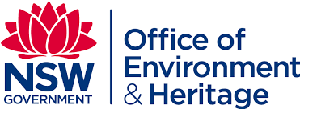
The Biodiversity Offset Scheme creates a transparent, consistent and scientifically based approach to biodiversity assessment and offsetting for all type of development that are likely to have a significant impact on biodiversity. It also establishes biodiversity stewardship agreements, which are voluntary in-perpetuity agreements entered by landholders, to secure offset sites.
The CMD is working on the design of a smart market for the New South Wales Government's (Office of Environment and Heritage) Biodiversity Offset Scheme. This market will facilitate efficient and effective transactions between developers willing to pay for biodiversity offset credits and landholders able to produce the offset needed.
Transurban

Road User Charging
Increasing interest in electric vehicles, congestion and road pricing has renewed interest in the way road networks are allocated, priced and managed. The CMD has contributed to the emerging road policy debate through a range of activities.
The CMD was engaged in 2017 and 2018 to complete empirical analysis of the recent large-scale Road Usage Trail completed by Transurban in Melbourne. The CMD identified behavioural responses of motorists to usage-based and congestion-based road management options. The CMD also considered: the institutional environment that would be required to implement usage-based road pricing; the problem of transitioning to a road pricing model; and the mechanisms needed for road congestion management.
For more information on Transurban, see https://www.transurban.com/
Victorian Government Purchasing Board
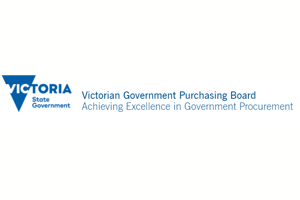
Electricity Procurement
The CMD engaged with procurement groups in Government to improve the cost-effectiveness of procurement by government. This was facilitated by providing support to design procurement auctions, design incentive structure in contracts, testing new approaches and the implementation of new procurement processes. The CMD designed a procurement auction for allocation of Victorian supply contracts.
A paper outlining four procurement options was submitted to the Procurement Control Board in November 2012.